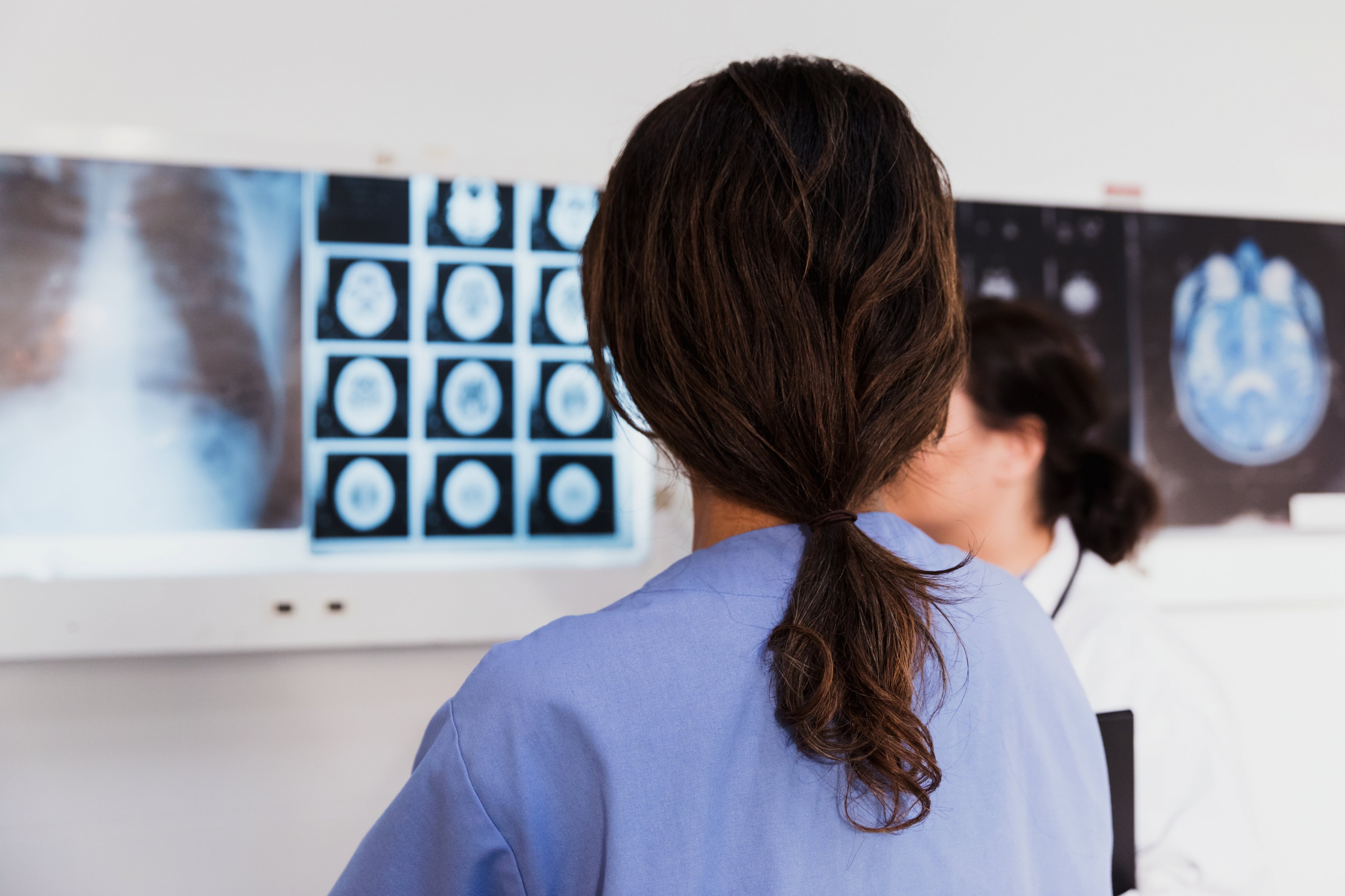
If you would like to learn more about the IAEA’s work, sign up for our weekly updates containing our most important news, multimedia and more.

Thyroid Studies
SYNOPTIC - STRUCTURED REPORT - KEY ELEMENTS
STRUCTURED TEMPLATES
The written report is the final product of the Nuclear Medicine consultation. Reports must contain specific information to identify the patient, the specific procedure, indications for the examination, radiopharmaceutical used and activity administered, route of administration, interval between tracer administration and imaging, succinct technical information about data acquisition and processing (especially the use and dose of additional drugs such as adenosine, CCK, morphine, lasix, etc), specific image and data analysis findings, and a conclusion.
The report should be concise, clear and specific. Standard anatomic designations and physiologic descriptors should be used. Jargon terms, such as "defect" or "photopenia", should not appear in the report. When possible, lesions should be specifically enumerated, physical size measured, and uptake quantified. When lesions are very numerous, the major areas of involvement should be specifically identified. When previous examinations are available, the improvement, progression or stability of disease should be identified. Examples of specific reports are contained with a description of each of the imaging procedures.
GENERAL STRUCTURE
The following elements should be included in all reports:
Patient identifier: Name, gender, birth date, medical record number
Date procedure started and date reported
Procedure Title
Indication: Brief statement of clinical problem and question to be answered
Technical factors: Radiopharmaceutical, dose, route of administration, type of scan, interval between injection and imaging, interventions
Reference to prior examination of the same type
Reference to other procedures
Findings: Address clinical question first.
Interpretation: As definitive as possible and avoid repetition of findings
THYROID SCAN [99mTc-PERTECHNETATE] PERFORMED [date]
Correlation: [Thyroid ultrasound performed [date], which demonstrated multiple nodules]
Radiopharmaceutical: 99mTc-pertechnetate [10] mCi
Clinical Statement: A 27 year old woman with nodular goiter
Comparison: [None]
Technique: 20 minutes after intravenous administration of 99mTc-pertechnetate, anterior and anterior oblique images of the thyroid were recorded. An aliquot of the injected dose was imaged in a similar fashion.
Findings:
The right lobe of the thyroid measures 3x1cm, and the left lobe 4x1 cm. There is irregular uptake in the gland.
99mTc-pertechnetate uptake = 3.5%
Impression: Multinodular goiter with normal trapping function.
WHOLE BODY 131I-Iodide performed [date]
Clinical Statement: 46 year old woman with 2 cm papillary thyroid cancer, treated with thyroidectomy and postoperative 131I-iodide, for evaluation.
Comparison: Post-treatment whole body and spot images performed [DATE], which demonstrated uptake in the thyroid bed.
Correlation: None
Radiopharmaceutical: 131I-iodide 5 mCi
Technique: Following preparation with a low iodine diet for 10 days, and two doses of rhTSH i.m., 131I-iodide was administered orally. 3 days later whole body images and spot views of the nexk and chest were recorded.
Findings:
Thyroid bed:
Neck nodes:
Extrathyroidal uptake:
Impression: [describe]
131I-Iodide DOSIMETRY PERFORMED [date]
Clinical Statement: 46 year old female with 6 cm papillary thyroid cancer and 10/20 positive nodes, treated with thyroidectomy and postoperative 131I-iodide, for evaluation.
Comparison: Post-treatment whole body and spot images performed [DATE], which demonstrated uptake in the thyroid bed and in level IV lymph nodes on the right..
Correlation: None
Radiopharmaceutical: 131I-iodide, 5 mCi
Technique: Following preparation with a low iodine diet for 10 days, and two doses of rhTSH i.m., 131I-iodide was administered orally. Multiple blood samples were obtained over 6 days for radioiodine blood/body clearance, and multiple whole body images and spot views of the neck and chest were recorded at 24, 48 and 72 hours.
Findings:
Thyroid bed:
Neck nodes:
Extrathyroidal uptake:
Maximum tolerated dose:
Impression: [describe, with calculation of estimated dosimetry to target lesion(s) and to bone marrow]
131I-Iodide THERAPY ADMINISTERED ON [date]
Clinical Statement: A 26 year old woman with multicentric papillary thyroid cancer and 10/12 lymph nodes, referred for post thyroidectomy therapy with radioiodine.
Following preparation with a low iodine diet for 10 days, review of results of a pregnancy test, renal function and CBC, the patient received two doses of recombinant TSH i.m. The risks and benefits of radioiodine therapy were discussed, and the patient signed informed consent. [AA] was administered to minimize nausea.
A total dose of [XXX] mCi of 131I-iodide was administered in [YY] capsules.
Post therapy scan is scheduled for [DATE].
Impression: Successful administration of 131I-iodide therapy.
